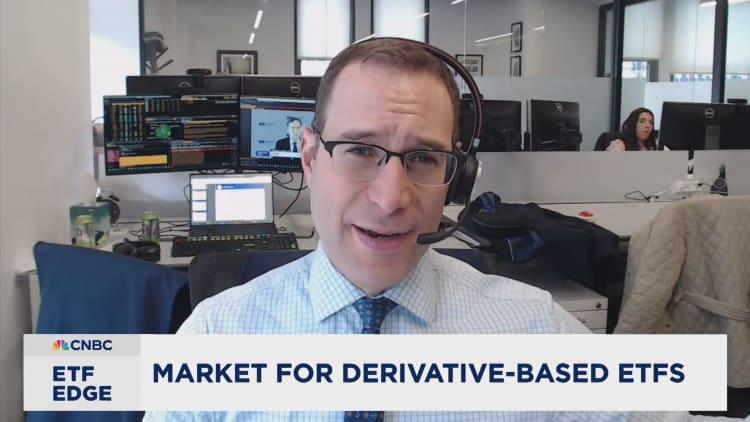‘Cash, precious metals, crypto’ is new norm for peak stock market risk


With a handful of mega-cap tech and AI stocks at the top of the S&P 500 Index dominating the U.S. market in a way without historical precedent, portfolio concentration risk has taken on a new form for investors long told to follow some version of Warren Buffett’s stock advice to “never bet against America.”
But with the nine tech stocks that are above Buffett’s Berkshire Hathaway by weight in the index representing nearly 40% of the market, it’s an imbalance that has investors looking for new ways to hedge. Buffett may not agree with their response, either, having been a long-time vocal doubter on the value of precious metals, but many are moving toward cash, gold, and crypto to find uncorrelated returns and protection from volatility.
“If you break down category ETF flows, it’s cash, precious metals, and then crypto,” Todd Sohn, Strategas Securities senior ETF and technical strategist, said on CNBC’s “ETF Edge” earlier this week, referencing what have been the most popular trades by investors this year. “They’re clearly being adopted by more mainstream [investors].”
He linked this trend directly to concentration risk. “Some investors are realizing they have a lot of tech and AI exposure, so they have to differentiate and find uncorrelated assets,” Sohn said.
While some experts are recommending eyebrow-raising allocations to gold and crypto, and there is more talk of a 60-20-20 portfolio to replace the classic 60-40 stock-bond mix, most allocations are still small, but growing.
“Most of the conversations I have and the allocation papers I’ll read say one to three percent on crypto and three to seven [percent] on gold,” Sohn said.
Gold has experienced a rough week, with significant selling, but up over 60% for the year coming into this week’s trading, it is not a major surprise to see some profit-taking. Gold had hit record highs above $4,400 this month, supported by central bank buying, a depreciating dollar, and persistent geopolitical risk, the so-called “debasement trade.”
The SPDR Gold Shares (GLD) has seen around $6.8 billion in flows over the past month, in a year during which gold funds have neared the $40 billion mark in net inflows from investors.
Crypto, the newer hedge becoming more compelling to investors, has also had a good year, though gold has more than tripled bitcoin‘s return of 17%, while ethereum has gained 15%. The launch of spot bitcoin ETFs has brought institutional money into the space and has turned digital assets into legitimate portfolio tools. The iShares Bitcoin Trust (IBIT) is one of the largest spot bitcoin ETFs, managing close to $90 billion in assets, according to VettaFi.
Sohn says the use of ETFs to access new approaches to the market has been core to its history and evolution. “We started with large-cap equities in ’93, gold and emerging markets in 2004, and now we have covered call and yield-max products,” Sohn said.
That also means investors can manage risk differently. Instead of relying on high-yield stocks or simple bond funds, they can build portfolios with derivative-based ETFs or alternative exposures.
Crypto tells a similar story. With regulated ETFs now in place, bitcoin and ethereum have moved from speculative trades to recognized components of diversified strategies. “The pace of these developments and innovation that launches these ETFs is lightning speed,” Sohn said.
